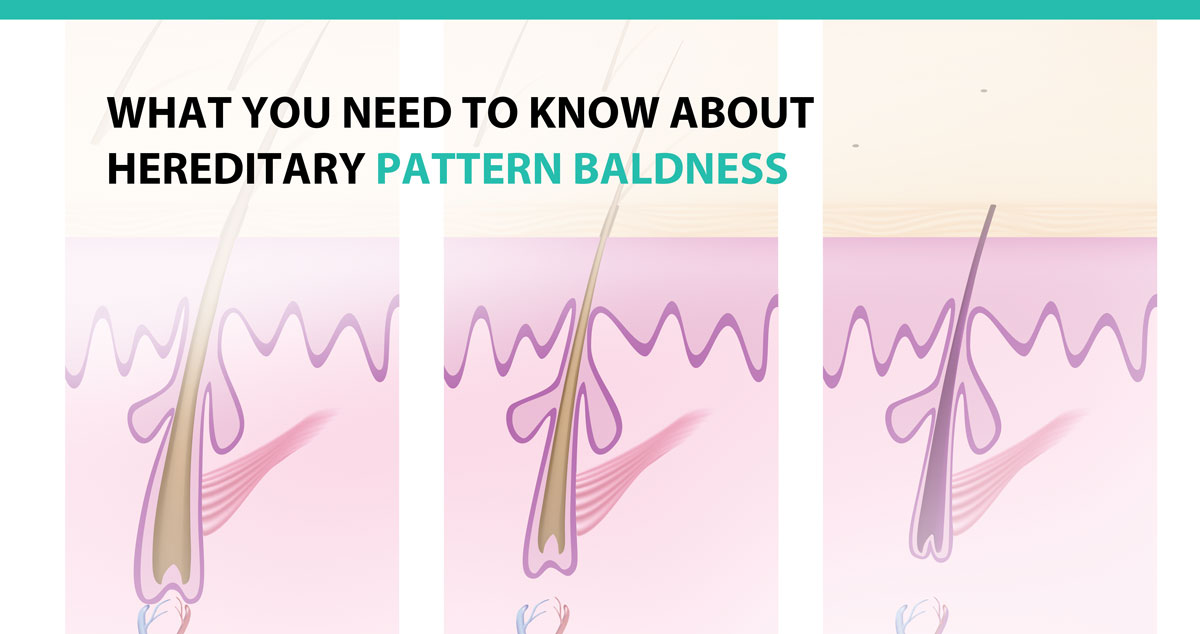
Hereditary pattern baldness, also known as androgenetic alopecia, is a naturally-occurring condition where hair falls off as you age. It affects both men and women, although it is more prevalent in men. Hereditary pattern baldness in men starts as early as age 20 or 30, while women experience it much later in life. Female-pattern baldness usually occurs around menopause and is less noticeable compared to male-pattern baldness. Unlike other forms of hair loss, hereditary baldness is not preventable. Below are some of the things you need to know about hereditary-pattern baldness to help you manage the condition.
Causes of Hereditary Baldness
As the name suggests, hereditary baldness runs in families. This means that if your relatives have it, you are highly likely to also suffer from the condition. The main cause of hereditary pattern baldness is the gene known as androgen receptor found in the X chromosome. Although it gives the impression that you can inherit the condition from your mother’s side, both parents can pass down the gene. Men whose fathers experience baldness are equally more likely to suffer from hereditary baldness.
You can also inherit DHT sensitivity from your parents, which predisposes you to hair loss. DHT (dihydrotestosterone) is a hormone found in men that causes the shrinking of hair follicles over time, resulting in what is known as male-pattern baldness. Note that the AR gene is not the only cause for androgenetic alopecia, as other gene variations can contribute to the condition. Hormonal changes during menopause can also lead to androgenetic alopecia in women.
Symptoms of Hereditary Baldness
Since baldness can result from various reasons, knowing the symptom of hereditary baldness will help you distinguish it from other types of hair loss. Shedding too much hair on your comb, pillow, or in the shower is not a reliable sign of hereditary baldness as it could be a result of other factors such as an illness or even childbirth. What’s more, we tend to shed at least 100 hairs daily!
Hereditary baldness in men begins at the temples affecting the hairline and progresses towards the center of the head. The hair loss may advance to leave a strip of hair around the side and back of the head. For women, hereditary baldness causes hair loss throughout the head. Although it becomes more noticeable at the head’s center over time, female-pattern baldness does not affect the hairline.
Treatment Options for Hereditary-Pattern Baldness
Some people decide to let the hair loss run its course, while others conceal it using wigs or hairstyles. However, just because it is not preventable doesn’t mean you have to live with the effects of hereditary pattern baldness. Below are the various treatment options that can help you regrow your hair.
- Medication
Finasteride and minoxidil are available for slowing hair loss. Minoxidil is an over-the-counter solution that you apply on your scalp twice a day, while finasteride is an oral prescription pill that blocks the testosterone responsible for hair loss. While both genders can use minoxidil medication, finasteride is only ideal for men.
- Hair Transplant
A hair transplant is one of the most successful and reliable solutions to hair loss. It involves the transfer of hair grafts from the side or back of your head to the balding area. The transplanted hair is resistant to the DHT hormone that causes hair loss.
- Low-Level Laser Treatment
This treatment uses a combination of light and heat to stimulate the growth of hair. It works by shifting hair follicles into the growth stage and also increasing blood flow to the balding area. More means more oxygen and nutrients to the present hair follicles which encourages hair regrowth.
If you suffer from hereditary-pattern baldness or any form of hair loss, all hope is not lost. Dr. Williams can help you regain your hair and confidence thanks to his extensive experience in hair restoration. Get in touch with us today or book an appointment for reliable hair loss solutions.










